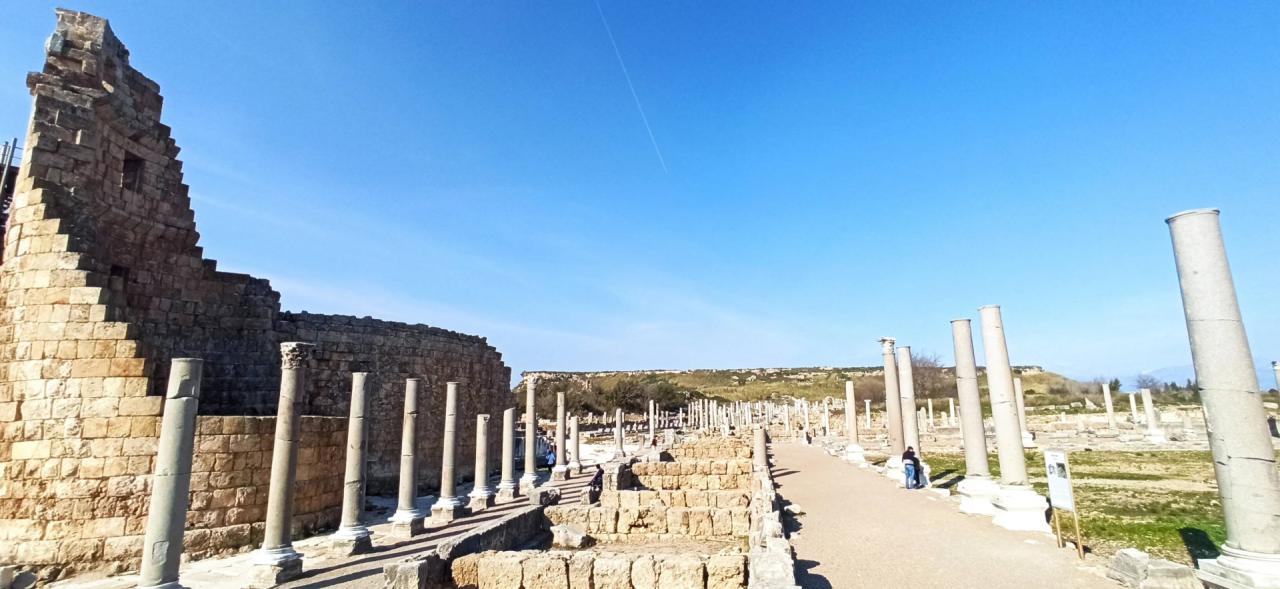
Perge Ancient City: Perge is located in the Aksu district of Antalya, 17 km east of the city center. It is considered one of the most beautiful ancient cities in Antalya, standing out with its impressive marble statues and urban planning compared to other cities.
Perge, which once served as the capital of the Pamphylia region, has been inhabited since the years 4000-3000 BC, as evidenced by artifacts found in the nearby Karain, Öküzini, Beldibi, and Belbaşı caves.
The city is also of significant importance during the Hittite Empire period, as seen in the bronze plates discovered at the Hattusa ruins. Being an important trade city, the people of Perge built and developed their city with great care and prosperity.
After the Treaty of Apamea, the region (Pamphylia) was divided into two. The treaty did not clearly define the borders of the Seleucid Kingdoms. The Pergamon Kingdom took control of Western Pamphylia, including Aksu (Kestros). Aspendos and Side remained independent, and both cities became allies of Rome. Despite the Apamea Treaty, the Pergamon Kingdom wanted to dominate all of Pamphylia. Aspendos, Side, and Silyon managed to preserve their independence with the help of the Romans. As a result, King Attalus II had to establish Attaleia to secure a port on the southern Mediterranean.
After the Trojan War, the city was founded by three commanders who participated in the war. It is one of the rare cities where peace and prosperity reigned. The key to the city was directly given to Alexander the Great to prevent its destruction. Along with its role as a trade port, its wealth, and religious significance, Perge is also the birthplace of the famous Greek mathematician Apollonius of Perga.
During the Eastern Roman period, Pamphylia had special status, with Side being the first and Perge being the second psycho-political center. The famous traveler Evliya Çelebi visited Perge in the 17th century. Paul and his friend Barnabas visited the city twice. During the Ottoman period, Alanya and Antalya city centers gained prominence.
The artifacts found during the excavations of Perge are displayed in the Antalya Archaeology Museum. The site includes a stadium with a capacity of 15,000 people, an amphitheater, a southern bath, a Hellenistic gate, and many columns in the city center.
In recent years, Perge has become a popular destination for both local and international visitors, especially due to the rise of social media, and it has become an important location for photography. After visiting Perge, we highly recommend visiting the carefully curated Antalya Archaeology Museum. Due to the large size of the site and the absence of shaded areas, it is advised that visitors consider the heat factor during visits in the summer.
Belconti Resort Hotel contributes financially to the excavation works of Perge to ensure that our history and culture are passed on to future generations. A plaque on a column on the columned street indicates that the restoration was carried out with the support of Belconti Resort Hotel.
Guests staying at our hotel who wish to visit Perge can reach Aksu by minibus, which departs every 20 minutes from Belek. Perge is within walking distance from Aksu. Guests coming from Antalya can use the Expo tram and municipal buses for transportation.




